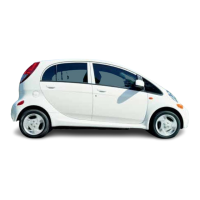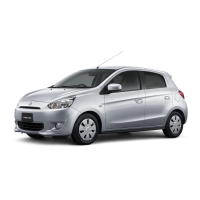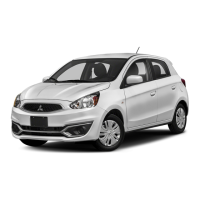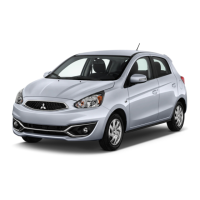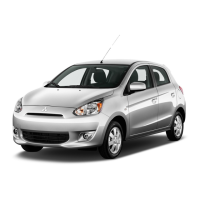Chapter 10 Suspension and steering systems IO-13
10.6b 4WD Steering knuckle details
1 Fropt hub assembly
2 Dust cover
3 Cotter pin
4
7% rod
end
5 Cotterpin
6 Lower baltoint
7 Cotterpin
8 Upper balljoint
9 Steering knuckle
10 Steering knuckle - removal and installation
Warning:
Wheneveranyofthesuspensionorsteeringfastenersareloos-
enedorremoved, iheymustbeinspectedand, ifnecessary, replaced with
newonesofthesamepartnumberoroforiginalequipmentqualityandde-
sign. Torque specifications must be followed for proper reassembly and
component retention.
Removal
Refer to illustrations 10.6a, IO.6b and 10.9
1 Loosenthewheellug nuts, raisethevehicleandsupportitsecurelyon
jackstands placed under the frame. Apply the parking brake. Remove the
wheel.
2 Remove the brake caliper and place it on top of the upper arm or wire it
up out of the way. Remove the caliper mounting bracket from the steering
knuckle (see Chapter 9 if necessary).
3 Remove the front hub assembly and brake disc (see Chapter 9).
4 On 2WD models, separate the stabilizer bar from the lower control
arm (see Section 2) and remove the strut bar (see Section 4).
5 Separate the tie-rod end from the knuckle arm (see Section 18).
6 Remove the cotter pins from the upper and lower balijoint studs and
back off the nuts one turn each (see illustrations).
7 Remove the shock absorber (see Section 3).
8 On 2WD models, install a spring compressor tool and compress the
front spring to the point that the rebound bumper on the upper control arm
clears the spring tower by apprqximately l/2-inch. Warning:
When com-
pressed the spring is under considerable pressure and could cause seri-
ous personal injury if it comes loose. Be careful that nothing slips or
moves.
9 Using a special tool, separate the suspension arms from the steering
knuckle (see illustration). There are several types of tools available, but
the kind that pushes the balljoint stud out of the knuckle boss works the
best. The wedge, or “pickle fork” type works fairly well, but it
tends to
dam-
age the balljoint seal. Some two-jaw puHers will do the job, also. Once the
balljoints have been released from the tapered holes in the knuckle, re-
movethe nutscompletelyand carefully detach the knuckle. On4WD mod-
els, be careful not to damage the CV joint
boots
when detaching the
driveaxle. On some early 2WD models it will be necessary to unbolt the
knuckle and detach it from the spindle.
10.9 To separate the suspension arms from the steering
knuckle, special tools must be used to force the bailjoint studs
out of the tapered holes in the steering knuckle (the numbers
shown are the manufacturer’s special tool numbers)
Installation
IO Place the knuckle between the upper and lower suspension armsand
insert the balljointstuds into the knuckle, beginning with the lower balljoint.
Install the nutsand tighten them to the torque listed in this Chapter’s Spec-
ifications. Install new cotter pins, tightening the nuts slightly to align the
slots in the nuts with the holes in the balljoint studs, if necessary.
11 On 2WD models, make sure the spring is compressed enough so that
the spring pressure doesn’t interfere with the propertightening of the ball-
joint nuts. Remove the compressor tool.
12 Install the shock absorber.
13 Connect the tie-rod end to the knuckle arm and tighten the nut to the
torque listed in this Chapter’s Specifications. Be sure to use a new cotter
pin.
14 Install the strut rod and connect the stabilizer bar.
15 On 2WD models, install the hub and brake disc assembly (see Chap-
ter 9).
16 instalithebrakecalipermountingbracketandcaliper(seeChapter9).
17 install the wheel and lug nuts. Lower the vehicle to the ground and
tighten the nuts to the torque specified in Chapter 1.

